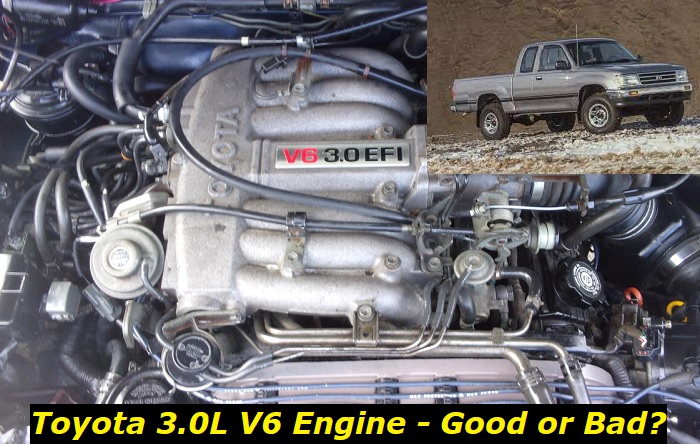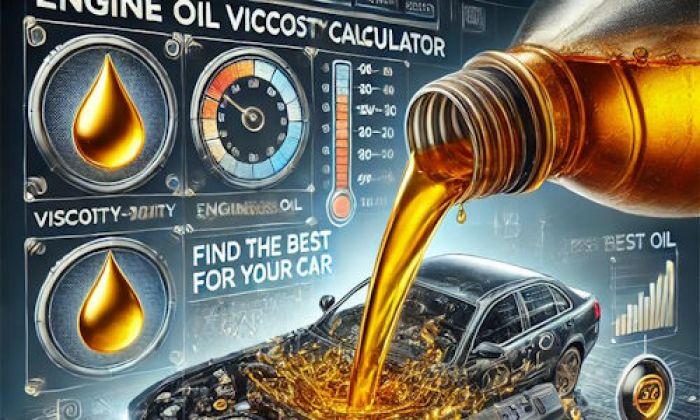Toyota is by far the most popular car brand in the world with the highest market share in the automotive industry. Since the start of its dominance in the US in the mid-2000s, the Japanese car brand has remained unmatched in terms of unit sales. The customer loyalty of the company can be attributed to the reliability and durability of its vehicles. However, that does not exactly mean that there have never been some bad eggs in its lineup over the years.
One of the engines produced by Toyota that has gained infamy for its specific set of problems is the 3.0L V6 3VZ-E engine produced from 1988 to 1995 for its big vehicles like the 4Runner, Hilux, and the T100. In this article, we will revisit the most common issues of the engine and review whether or not it is as bad as many people say.

Key features and my opinion about the engine
- Production years:1988-1995
- Average lifespan of 3VZ-E:190,000-220,000 miles
- Fuel supply type:port injection
- Power range:145-150 hp
- Fuel efficiency:awful
- Engine block material:cast-iron
- Engine reliability score:high
- The most common problems:overheating issues are common, crankshaft may give up too early, oil consumption is inevitable.
Longevity of the Toyota 3.0L Engine
A Toyota engine lasting over 200,000 miles with only minor repairs is not entirely rare if coupled with regular maintenance. However, the automaker seems to have missed the mark in terms of quality on the 3.0L 3VZ-E engine.
According to dissatisfied owners of the engine, major problems can occur even before the 100,000-mile mark in its stock form. However, it should be noted that most of the versions of the engine that we have now have already been rebuilt as they have already reached the end of their useful lives at some point in the past. And knowing that the 3.0L has plenty of issues, it would be a surprise if one factory version made it to the present with only minor repairs.
Most Common Problems Experienced by Toyota 3.0L Engine Users
It's not really hard to look for references centering on the Toyota 3.0L engine. Based on various reports and customer complaints, among the most common culprits for all its troubles are the following:
1. Head Gasket Leak
If we were to tally the problems that the Toyota 3.0L engine has been notorious for over the years, head gasket leaks will surely come on top. Based on the history of the engine, its early 1990s generations are more prone to this due to the decision of its maker to ditch its original asbestos-based sealants, which are highly resistant to heat, in favor of molybdenum-based materials.
As the story went, the use of the metal proved to be very expensive, thus, the brand only applied them sparingly in its gaskets. Fast-forward to 1997, Toyota utilized more molybdenum in its redesigned gaskets, and it came with warranty coverage of eight years or 100,000 miles as a way to make up for the shortcoming.
The head gasket is a critical engine part that seals the engine block and cylinder head together. If it leaks, coolant and oil can mix, leading to serious problems.
The primary symptoms of a head gasket leak can include a white or greenish substance on the engine, decreased engine performance, and a burning smell. There are several possible causes of a head gasket leak, including cracks in the head gasket, worn-out valve seals, and damaged head bolts.
There are a few possible solutions to a head gasket leak. The first is to replace the head gasket. If the head bolts are damaged, they may also need to be changed. Another solution is to replace the valve seals, which can help prevent leaks from occurring. Finally, if the engine block is cracked, it may need to be replaced.
If a head gasket leak is not repaired, it can lead to serious engine damage. The coolant can cause the engine to overheat, and the oil can cause the engine to seize up or completely fail. When this happens, the only solution is to rebuild or replace the engine. Therefore, if you think you have a head gasket leak, it's important to take your vehicle to a mechanic as soon as possible. They are better equipped in terms of diagnosing the issue, which allows them to come up with the best line of action.
2. EGR Failure
Another trending topic in various forum threads dedicated to the Toyota 3.0L engine is Exhaust Gas Recirculation (EGR) delete. Apparently, many owners of the power unit tend to resort to this due to the high tendency of this part to fail.
The failure of the EGR system in the 3.0L Toyota engine may manifest itself in several ways. The most noticeable would be the sudden drop in power and torque output, as well as the vehicle's inability to accelerate properly. These symptoms are often accompanied by an error code from the vehicle's onboard diagnostic system when checked using an OBD1 scanner. Other less common but still possible symptoms of a failing EGR system include a hissing noise coming from the engine bay, coolant leaks, and excessive fuel consumption.
There are several possible causes for the EGR system to fail in the 3.0L Toyota engine. One is carbon buildup on the EGR valve, which can prevent it from opening and closing properly. Another is a faulty EGR temperature sensor, which can cause the system to inject too much or too little exhaust gas into the intake.
The solution for carbon buildup is to clean the EGR valve with a good quality carburetor cleaner. If the problem is a faulty EGR temperature sensor, then it will have to be replaced with a new one. In situations when repairs are more troublesome and no longer practical, it may also be necessary to replace the entire EGR system.
3. Timing Belt Wear
The recommended replacement of timing belts is every 80,000 to 100,000 miles. Considering that the Toyota 3.0L engines on the roads at present are already between 27 to 34 years old, chances are most of them are due for timing belt replacement.
The timing belt is a crucial engine component that keeps the engine's valves and pistons in sync. It rotates the camshaft, which opens and closes the valves at the correct time. When the timing belt wears out, it can cause the valves to open and close at the wrong time, resulting in engine damage.
There are several symptoms of a worn timing belt including the engine running rough or stalling, activation of the check engine light, strange noises coming from the engine, and reduced power or acceleration.
There are several possible causes of a worn timing belt. One is old age as it becomes brittle and dry, causing it to crack or break. Another is incorrect installation exposing it to premature wear. Last but not least is foreign debris getting caught along its spin causing damage and tear.
If you think you may have a problem with your timing belt, the best course of action is to take your car to a mechanic as soon as possible for its replacement. On the other hand, if it's simply misaligned, a simple recalibration may take care of the issue.
No matter what solution is required, it's important to get the problem fixed as soon as possible to avoid further damage to your engine. Waiting too long can result in costly repairs or even engine failure.
4. Defect in the Starter Contacts
The starter contacts in the Toyota 3.0L 3VZ-E engine can fail due to a number of reasons. One possible cause is corrosion of the contacts. This can be caused by moisture or chemicals getting into the contact area. Another is physical damage to the contacts. This can be due to debris or other objects coming into them or because of regular wear and tear considering their age.
One possible solution to this problem is to clean the contacts with a solvent. This will remove any corrosion or debris that may be present on the contacts. An alternative is to replace the damaged contacts with new ones. This will ensure that the contacts are in good working condition for the long run.
If the starter contacts in your Toyota 3.0L engine are not working properly, it is important to have them repaired or replaced as soon as possible. This will ensure that your engine starts properly and runs smoothly.
Toyota 3.0L Engine Specs
The Toyota 3.0L engine features a V6 configuration with a displacement of 2,958cc. It is naturally aspirated, made of a cast iron block and aluminum head, and has a single overhead cam (SOHC) cam design with 12 valves. The power unit has a bore of 87.5 mm and a stroke of 82 mm. All that allows it to generate a compression ratio of 9.0:1.
For an engine made for big vehicles, the Toyota 3.0L V6's output is rather underwhelming even by 1990s standards. Overall, the engine is just capable of producing 150 hp at 4,800 rpm and 180 lb-ft of torque at 3,400 rpm.
Conclusion
Toyota has certainly produced many reliable engines from the past to the present. The 3.0L V6 is, unfortunately, not among them.
On the bright side, most of the versions of the engine in circulation now have already been rebuilt, so the problems experienced by its factory variant may no longer be as prevalent as before. Still, we strongly recommend watching out for the symptoms pointing out its original issues if you happen to own one.
About the authors
The CarAraC research team is composed of seasoned auto mechanics and automotive industry professionals, including individuals with advanced degrees and certifications in their field. Our team members boast prestigious credentials, reflecting their extensive knowledge and skills. These qualifications include: IMI: Institute of the Motor Industry, ASE-Certified Master Automobile Technicians; Coventry University, Graduate of MA in Automotive Journalism; Politecnico di Torino, Italy, MS Automotive Engineering; Ss. Cyril and Methodius University in Skopje, Mechanical University in Skopje; TOC Automotive College; DHA Suffa University, Department of Mechanical Engineering






Add comment